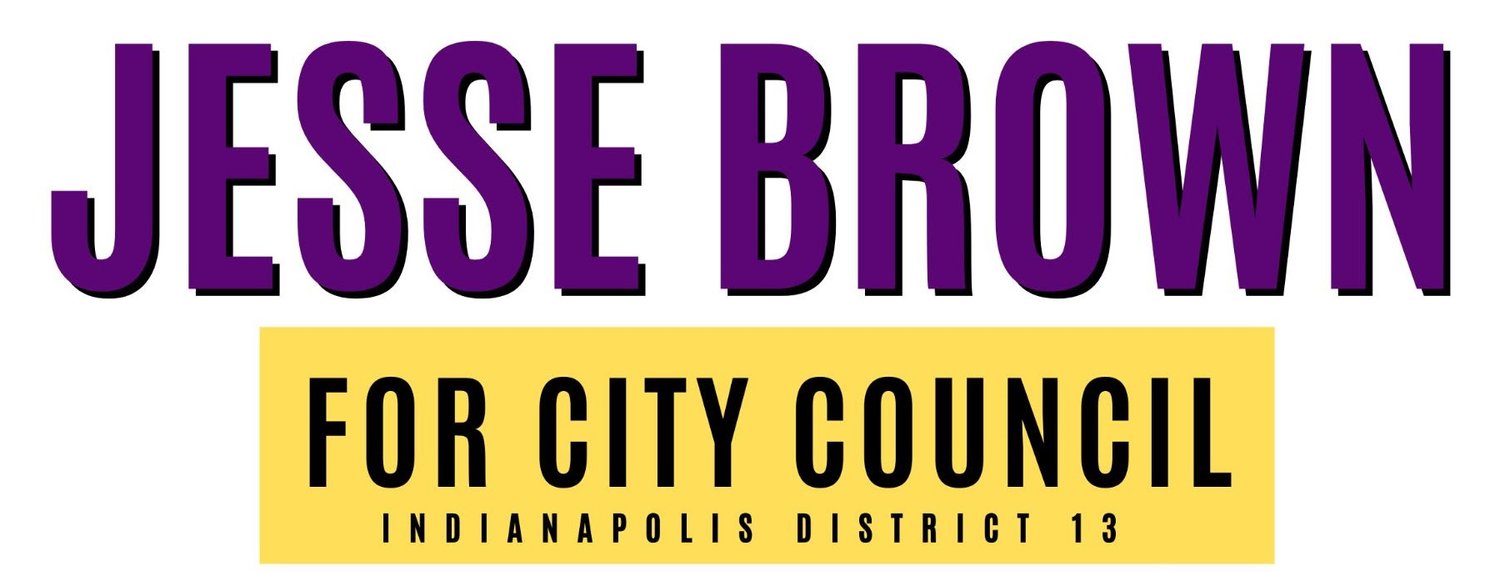Vision Zero WOULD fix this.
Friends,
I hope you’re enjoying your weekend. What a wild few weeks it’s been! As I saw someone post on social media,
“We are living through the most difficult question on the AP History exam from the year 2055.”
Scandals in local politics, high energy and enthusiasm in state politics, and multiple monumental changes in Presidential politics - all within half a month of each other.
The turmoil and excitement has distracted me more than I’d like to admit, and has switched up my planned communications in a few ways. I still need to get you the finished results from our June listening sessions. I have plenty of thoughts on the recent scandals in the Hogsett administration. And there are other political actions in the city right now that will likely end in lawsuits!
But for today, I wanted to write a short (for me) email about Vision Zero, including the Vision Zero Task Force enabling ordinance that passed out of the Public Works committee this month and heads to the full council for a final vote in August.
Vision Zero, as I’ve written before, is the goal of totally eliminating every single fatality and serious injury from traffic crashes.
Period.
You’ll notice I didn’t say anything about a specific tactic, timeline, mode of transportation, or anything else.
There is a group that I strongly support known as the Vision Zero Network. This group of advocates and policy wonks provides expertise and suggestions on the tested best practices towards the goal of Vision Zero.
There is also a Vision Zero task force that will be created as part of the enabling legislation. This 15-member task force will hold public meetings, report to the Council on a quarterly basis, and will have a full time employee of the City responsible for pushing for changes within the City to more rapidly reduce the number of fatalities and serious injuries caused by traffic in our city. I am proud that we have set an aggressive timeline: we want to eliminate all such horrible outcomes by the year 2025.
Any and all methods the City can take for protecting lives should be reviewed by this task force. This includes traffic enforcement, education campaigns, and street design / built environment changes.
This week, an apparently intoxicated driver in a Dodge Hellcat ran a red light at over 70 miles per hour and smashed into an SUV carrying a woman and six children. The driver had been driving 97 mph just a second or two before, on a road with a 30 mph speed limit.
Several of the children were critically injured - two were still unconscious days after the crash. Their lives will be irrevocably changed if they even survive, which is not yet a guarantee.
Many people reached out to me to express that this collision was proof that “Vision Zero” couldn’t stop every similar crash and that what was truly needed was vigorous police enforcement of traffic violations.
First of all, if you’ve been reading carefully, you’ll see that Vision Zero is a goal, not a specific policy to achieve the goal. Traffic enforcement will almost certainly be necessary to help change the worst of driver behavior while other reforms are being followed. (By the way, I worked with a volunteer from Purdue this summer who helped me by writing this amazing brief on how we could do so more safely, efficiently, and equitably by using a civilian, non-police team. Read the draft here!)
But I still wanted to dig in my heels and make the case that enforcement would not be the most appropriate way to prevent situations like this from occurring in the future.
People driving drunk on a learner’s permit, empty bottle of tequila in the car, at triple the posted speed limit are unlikely to think carefully and critically about their life choices and the risk of being pulled over. And at those speeds, police do not have safe ways to intervene. Many times this year already, people have been hurt or killed in crashes that occurred while police were chasing cars. That includes police officers being hurt as well as civilians.
What would truly prevent this behavior from hurting or killing children in the future?
Well, there’s lots of great ideas we could try. Traffic circles, bollards, and other obstacles in the middle of intersections that force drivers to slow down to avoid tend to frustrate some drivers. They undeniably cause drivers more stress and anxiety about driving than they experience on average today. Some drivers might even be so stressed they have to set their phones aside and put both hands on the wheel! Somehow, to me this seems like a small price to pay when weighed against disabled and violently killed children.
Safe design does not have to be an intimidating brutalist experience, though. Tree-lined, narrower roads naturally slow drivers down. These designs help highlight attractive storefronts and encourage commerce, allow families and neighbors to stress less about the streets near their houses, and might even help calm driver aggression.
The best part about the Vision Zero Task Force we are creating is that it will do its work right out in public. All of these ideas and others will be debated, discussed, experimented with, and learned from. And we, the taxpayers, will get to see how the sausage is made when it comes to preventing deaths.
Fifty pedestrians and cyclists have been struck by cars in my district badly enough to have required emergency response since I took office. At least one person died as a result.
Many, many more drivers have been seriously injured and killed in crashes in that time period.
Cities around the world have worked to put a stop to this violence, and we are on our way to doing it, too.
A better city is possible. I’m proud to be taking these steps in that direction.
In love and solidarity,
Jesse
